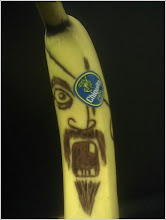Later… with Jools Holland
‘Later.. with Jools Holland’ is a contemporary British music television show hosted by Jool Holland. A spin-off of ‘The Late Show’, it has been running without advertising breaks since 1992 and is part of BBC2's late-night line-up, usually around 11PM. It is usually recorded on a Tuesday for Friday broadcast and features a mixture of both established and new musical artists, from solo performers to bands and larger ensembles. ‘Later… with Jools Holland’ draws from a diverse palette of popular and world music. Each show features around five bands with a variety of styles performing for each other and a small studio audience. Jools Holland introduces the show and interviews one or more of the performers. A unique feature is the short jam session that begins each show, involving all of his invited guests, along with Holland on piano. This beginning jam session also best shows the unusual layout of the set. All the bands are arrayed in a circle with the audience filling in the gaps between them. The show is captured using a variety of different types of camera. A few of these would include: tracking cameras, fixed panning cameras and a jib mounted camera. With live shows like ‘Later… with Jools Holland’ they are filmed by switching between multiple cameras that are all recording at the same time.
The multiple-camera setup, or multiple-camera mode of production, is a method of shooting films and television programs as well as live television. Several cameras are employed on the set and simultaneously record and broadcast a scene. It is often contrasted with the single-camera setup, which uses just one camera on the set. Generally, there are two outer cameras that shoot close shots of the two most active characters on the set at any given time, while the central camera or cameras shoot a wider master shot to capture the overall action and establish the geography of the room. In this way, multiple shots are used in a single take without having to start and stop the action. This is more efficient for programs that are to be shown a short time after being shot as it reduces the time spent editing the footage. It is also a virtual necessity for shows like soap operas. Apart from saving editing time, scenes may be shot far more quickly as there is no need for re-lighting and the set-up of alternate camera angles for the scene to be shot again from the different angle. It also reduces the complexity of tracking continuity issues that crop up when the scene is reshot from the different angles. It is also vital for live television.
On the show ‘Later… with Jools Holland’ each band is recorded using a variety of shots, and the camera angles used are quite diverse. Bands are usually introduced from range with a high tracking shot, this shot establishes the band and there unique lighting and colours. This shot is most likely captured using a camera mounted on a ‘jib’; this jib is then mounted on tracks. Tracks are used to create a significantly more smooth, steady and accurate movement. The ‘jib’ allows the shoot to be captured from much higher than usual. In ‘Later… with Jools Holland’ the ‘jib’ provides a high track which then descends into a low wide-shot of the band. There is then a mixture of close-ups, mid-shots and wide-shots to capture the action; this would most likely be captured using two or three fixed cameras and two or three more to capture wide-shots of the band. Particularly in more energetic performances, camera shots include some sort of movement. This being whether it is a ‘zoom’ a ‘pan’, ‘track’ or ‘crab’.
With ‘‘Later with Jools Holland’ there is an ever-changing colour scheme involved in the set design; this is because each band seems to have a different theme.
For example: when the ‘Noisettes’ performed on the show they choose to have a bright an energetic set and light show, using exciting colours and a quick-moving, frantic light show. This worked effectively for them as it matched their performance. Although; this theme does not follow through the majority of the performances on the show. Jools Holland chooses to have a great diversity of performances on the show; this means that each band must have its own light show and colour scheme. When Tom Jones performed on the show, he used dark browns and golds as his background, to produce a warm secure performance.
The audience is normally seated to the right of the performers. This is in order to allow room for the cameras to move freely around the studio. Having the audience on the right of the performers also allows them to be included in some of the shots.
Using a very standard but successful studio set, Jools Holland introduces the groups or singers positioned almost adjacent to each other throughout the studio.The set arrangement is complete with perhaps an audience of around 150 people in the mid 20s and above group, who seem to understand and appreciate fine music.
Monday, 8 February 2010
Subscribe to:
Post Comments (Atom)

No comments:
Post a Comment